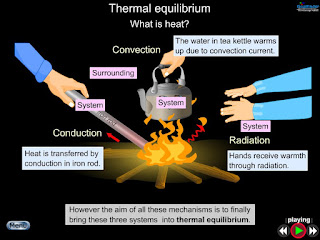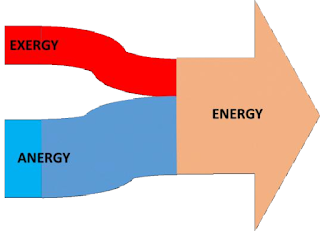GLASS: Ekam Sat Viprah bahuda vadanti
Dear friends,
QUEST ON GLASS MAKES ME QUESTION
I have seen people defining and defying on
what they are because the role and the way of life what we lead varies with
perception. Definition is contextual, when it comes to glass, it becomes much
more contextual and complicated, it may appear as simple, plain, clear and transparent
but the moment we define glass, we bring in various things in which inspired me to share what I read in a book "Glass Nanocomposites: Synthesis, properties and applications by Basudeb Karmakar, Klaus Rademann and Andrey L Stepanov." and those definitions made me feel that there is a similar connect on the way how we have imagine a system, a process, an individual, a
team, a genre, a concert, and it is also applicable for a concept
An Historian Perspective on GLASS: Lycurgus cup
I have wondered and wandered within for the
answers when I hear the way how archaeologist’s project glass as form of
cultural heritage varies from the perception of a person from literature. If
this is the case from arts, then the story of glass is different when it comes
to a person who is from science especially when it is defined from physical
science. Today, I have decided to communicate on perceptions and definitions of
glass.
A word and world relies on STANDARDS
In 1930, the first perception of glass “In the physicochemical sense, glass is a
frozen-in undercooled liquid” – Simon, This is based on super cooling
phenomena of glass, when the batch is normalized or quenched, it still forms a
glass. This makes a point that Prof. Simon might have defined on the basis of synthesis.
Two years later, Prof. Zachariasen, defined “A
glass has an extended three-dimensional network and its energy content is
comparable to that of the corresponding crystal but without periodicity and
symmetry” this one is based on structure what we see in glass. A definition
with much proper insight and understanding would be like this where we look
into inner picture of the material but seems to be bit complex to understand
and a year later to Zachariasen, Tammann defined “In the glassy state, there are solids, uncrystallized materials” this seems
to be simplified version of understanding glass by just its atomic arrangements.
In year 1938, Morrey defined “A glass is an inorganic substance in a
condition which is continuous with, and analogous to, the liquid state of that
substance, but which, as the result of having been cooled from the fused
condition, has attained so high a degree of viscosity as to be, for all
practical purposes, rigid and … cooled to a rigid condition without
crystallizing” this definition seems to be complete but it is confusing a
lot for the complexity in understanding what glass is but the world can shorten
this further and that simplified format is considered as a STANDARD “Glass is an inorganic product of fusion
which has cooled to a rigid condition without crystallizing” which was
defined in year 1945, A.S.T.M. This definition is one which one may have to
understand the beauty of what kind of network formers, modifiers and intermediates
are used to synthesis (INORGANIC PRODUCT OF FUSION) and how these fused product
convert back to glass, this is standard practice when we melt quench and it outreaches
people with a note that THIS IS WHAT GLASS IS.
Few more things are required to understand what Glass is...
The US- NRC redefined (1968) “Glass is an X-ray amorphous solid which
exhibits the glass transition, the latter being defined as that phenomenon in
which a solid amorphous phase exhibits with changing temperature a more or less
sudden change in the derivative thermodynamic properties, such as heat capacity
and expansion coefficient, from crystal-like to liquid-like values” which
is on a evidence and the role of glass structure defined by Zachariasen is
evident and those rules what we studied in article 50 has been key to explore
these set of class called glass. This was further interpreted by Doremus in
1973 “Glass is an amorphous solid. A
material is amorphous when it has no long-range order, that is, when there is
no regularity in the arrangement of its molecular constituents on a scale
larger than a few times the size of these groups”. The world of glass is seems to become more
transparent and truthful as it becomes very closer to the reality of glass
world but this reality what we see in structure was made more evident as the
world started expedition on glass transition phenomena.
Glass Transition + AMORPHOUS = GLASS
In the year 1990 Elliot, defined “A glass is an amorphous solid which exhibits a glass transition” Varshenya defined “Glass is a
noncrystalline or simple amorphous solid with a liquid-like structure” in 1994 and again in 2010 he redefined
it as “Glass is a solid having a
noncrystalline structure, which continuously converts to a liquid upon heating”.
Gupta defined “A noncrystalline solid is a “glass” if its short-range order (SRO)
equals to that of its melt” as this definition has structure property relationship
on the basis of periodicity in the melt as well as material which was established
in 1996 and subsequently a year later Shelby defined it as “A glass is an amorphous solid completely lacking in long range, periodic
atomic structure, and exhibiting a region of glass transformation behavior. Any
material, inorganic, organic, or metallic, formed by any technique, which
exhibits glass transformation behavior is a glass” the way of understanding
glass came in light with Shelby as he covers a whole picture of structure-property relationship as on what
glass is all about.
Latest version of this transparent material
glass was defined by Basudeb Karmakar in the year 2015 “Glass is a noncrystalline solid which exhibits the glass
transformation range in the volume or enthalpy-temperature relationship”. This is simplified definition to understand
what glass is all about.
Since 1930, till date we are defining and
redefining what glass is , the truth is relative and varies with the perception
on what we intended to define. A transparent, amorphous, short ranged material
has so many interpretations. Then, imagine how the humans are defined the way
we look, we talk, we behave and no matter what you are, for some you might be
as devilish and for some you may be a godly figure. Perception of others does
not define what you are. It is your character and transparency that defines
truth just like Glass.
Ekam Sat Vipraha Bahuda Vadanti, truth is one but scholars interpret it in several ways.








